Day 1 Lisbon - Caceres - Seville (579 km)
Day 2 Seville
Day 3 Seville - Cordoba (119 km)
Day 4 Cordoba - Ronda - Costa del Sol (194 km)
Day 5 Costa del Sol - Assilah - Rabat (319 km)
Day 6 Rabat - Fez (160 km)
Day 7 Fez - Chefchaouen - Tangier (212 km)
Day 8 Tangier - Costa del Sol (118 km)
Day 9 Costa del Sol - Granada (147 km)
Day 10 Granada - Toledo - Madrid (433 km)
Day 1:
Lisbon - Caceres - Seville (579 km)
Breakfast: Excluded|Lunch: Excluded|Dinner: Included
In the morning, we will depart from Lisbon and drive across the border into Spain until we reach Caceres, a UNESCO World Heritage Site, where we will spend some time exploring. Afterwards, we will continue to Sevilla, where we will enjoy dinner and spend the night.
-
Caceres, SPAIN
Caceres is the capital of Caceres province, in the autonomous community of Extremadura, Spain. The municipio has a land area of 1,750.33 km2 (675.81 sq mi), the largest geographically in Spain. The walled city has been declared a UNESCO World Heritage Site.
Day 2:
Seville
Breakfast: Included|Lunch: Included|Dinner: Excluded
We will tour Seville in the morning, visiting the Maria
Luisa Park, Plaza de Espana, the exterior of the city's
stunning Cathedral and its bell tower, called Giralda and
the typical neighbourhood of Santa Cruz with its streets,
squares and narrow alleys. If you wish, you can optionally
navigate the Guadalquivir river, during which you will enjoy
a panoramic view of the Gold Tower and Expo 92, or visit
to the Maestranza bullring. In the evening, also as an optional activity, you can attend a flamenco show.
-
Seville, SPAIN
Seville is the capital of Andalucia and the cultural and financial centre of southern Spain. A city of just over 700,000 inhabitants (1.6 million in the metropolitan area, making it Spain's 4th largest city), Seville is Andalucia's top destination, with much to offer the traveler.
Parque de Maria Luisa
On the riverbanks of Sevilla, Maria Luisa Park is a large public area that features lovely foliage, fountains, and walkways in the middle of this beautiful city. Within the park are many statues of famous Spanish figures.
Plaza de Espana
A large section of Maria Luisa Park in Sevilla, the Plaza de Espana is a large open space featuring buildings of Renaissance revival architecture. Most of the buildings are currently used for government purposes.
Seville Cathedral (Outside Visit)
The third-largest church in the world (and the largest cathedral), the Seville is a massive Gothic building. Each of its facades has multiple entrances that are all exquisitely and ornately adorned. It was built over an old mosque.
La Giralda
La Giralda was once a minaret for the Muslim population in medieval Sevilla, but was converted to a church bell tower after Christian forces had regained power in Iberia. Its design has influenced many other towers around the world.
Santa Cruz (Jewish Quarter)
The barrio of Santa Cruz in Sevilla was once the city's Jewish Quarter, and is now the most popular tourist are in the city. The narrow, winding streets and alleyways of this neighborhood remind visitors of a labyrinth.

Sevillian Night in Patio Sevilla
One of the most famous and well-known tablaos in Sevilla. You will get to know the Andalusian art that is captured in the dance, the guitar playing and the cante in the show. Dancers and singers with national and international awards will show us the art of flamenco and Spanish classical dance.
Tour Fee (Optional): Adult $47 / €40; Child $47 / €40; drink included|Duration: Approx. 1 Hour 30 Minutes
Day 3:
Seville - Cordoba (119 km)
Breakfast: Included|Lunch: Excluded|Dinner: Included
In the morning, we will head to Cordoba, visiting the Mosque-Cathedral, the Jewish Quarter, and more. Then, we will have the rest of the day free to spend at our own leisure.
-
Cordoba, SPAIN
Cordoba is a city in Andalusia, Spain, and the capital of the province of Cordoba. The city is located on the banks of the Guadalquivir river, and its easy access to the mining resources of the Sierra Morena satisfies the population's needs.
The Mosque-Cathedral of Cordoba
The interior of this dual mosque-cathedral perfectly reflects the religious power-struggle of medieval Spain. The conversion of the church into a mosque lasted from 784 to 987. The complex is massive and features many small chapels.
Admission (Included): Adult $16 / €13; Child (10-14 yrs) $9 / €7
Jewish Quarter
Cordoba's Jewish Quarter is marked by narrow and irregular streets. It houses a medieval Synagogue and the Sephardic House. Unfortunately, this neighborhood was a focal point of the Spanish Inquisition, during which Cordoba played a large role.
Day 4:
Cordoba - Ronda - Costa del Sol (194 km)
Breakfast: Included|Lunch: Excluded|Dinner: Included
On our way to Costa del Sol, we will stop in the village of Ronda to see the famous Puento Nuevo Bridge. After some free time here, we will continue to the Costa del Sol, where we will eat dinner and spend the night.
-
Ronda, SPAIN
Ronda is a city in the Spanish province of Malaga. It is located about 100 kilometres (62 mi) west of the city of Malaga, within the autonomous community of Andalusia.
Puente Nuevo Bridge
This 18th century bridge crosses a 390-foot deep ravine that divides the small Andalusian city of Ronda. There is a central chamber underneath the bridge's walkway that today houses a small exhibit about the bridge's history.
-
Costa del Sol, SPAIN
It is a region in the south of Spain, in the autonomous community of Andalusia, comprising the coastal towns and communities along the coastline of the Province of Malaga. Formerly made up only of a series of small fishing settlements, today the region is a world-renowned tourist destination.
Day 5:
Costa del Sol - Assilah - Rabat (319 km)
Breakfast: Included|Lunch: Excluded|Dinner: Included
Departure From the Costa del Sol to embark for
Tangier crossing the Strait of Gibraltar. Arrival to Morocco
and continuation to Rabat. Stop for free lunch in the beautiful city of Assilah. In the afternoon arrival to Rabat.
-
Assilah, Morocco
Assilah, a charming coastal town in northern Morocco, is famous for its blue-and-white architecture, artistic vibe, and tranquil beaches.
-
Rabat, Morocco
Rabat is the capital and fourth largest city of Morocco. Tourism and the presence of all foreign embassies in Morocco serve to make Rabat one of the most important cities in the country.
Day 6:
Rabat - Fez (160 km)
Breakfast: Included|Lunch: Included|Dinner: Excluded
We will visit Rabat's
key points such as Tour Hassan, an unfinished mosque that
rises dominating the esplanade with more than 200 columns
and the Mausoleum of Mohamed V, built in memory of the
sultan who achieved the independence of the country and
in which the royal guard, in colourful in full dress they guard
the entrance to the monument on horseback. Continuation
to Fes the intellectual and religious capital. Panoramic tour
to know the royal palace and its 7 gates of Dar Al-Makhzen
on the way to the fascinating world of the medina of Fes El
Bali, the oldest and more extensive in Morocco, a UNESCO
World Heritage Site with 785 mosques and more than 2000
squares, streets and alleys that represent a labyrinthine return
in the time. From Bab Boujloud to Es-Seffarine square we will make a journey through the centuries starting in the 9th
to the 19th century, along the walk we will know how these
alleys are structured, the different constructions that make
up the wall of the medina, in addition from its artisan guilds
and neighborhoods such as leather tanners or seamstresses
to see their old ways of working. We will know a Medersa and
we will finish to the sound of the hammer of the potters working the cooper as they did hundreds of years ago. Lunch in
a typical restaurant.
-
Rabat, Morocco
Rabat is the capital and fourth largest city of Morocco. Tourism and the presence of all foreign embassies in Morocco serve to make Rabat one of the most important cities in the country.
Hassan Tower
The Hassan Tower is all that remains of an incomplete mosque, built in the 12th century AD, that was intended to be the world's largest. The Tower is only half as high as originally intended.
Mausoleum of Mohammed V
This mausoleum in Rabat is the burial site of King Mohammed V, who was king of the country until his death in 1961. The mausoleum is considered a beautiful example of the architectural style of the Alaouite Dynasty.
-
Fez, Morocco
The third-largest city in Morocco, Fez features beautiful historic architecture that showcases the incredible works of the Arab world.
Royal Palace gate
It is the royal palace of the Sultan of Alaouite in Fez, Morocco. The palace is located in the Fez Jdid district. It is 80 hectares in size and is known for its brass doors decorated with hard tiles and carved cedarwood. The palace is not open to the public.
Fes el Bali
The Fes el Bali is one of two medina quarters in the city of Fes, Morocco and a UNESCO World Heritage site. The district is surrounded by historic walls, and features excellent examples of Arab Moroccan art and architecture.
Bou Inania Madrasa
This madrasa (an Arabic word for an educational institution) in Fes, Morocco, is regarded as one of the best examples of Marinid architecture. It is named for Abu Inan Faris, a Moroccan ruler in the Middle Ages.
Day 7:
Fez - Chefchaouen - Tangier (212 km)
Breakfast: Included|Lunch: Excluded|Dinner: Included
Departure to Chefchaouen, one of
the most beautiful and picturesque village of Morocco. We
will walk along their strait streets painted by blue arriving to
Outta El Hamman Square. Free time. Departure to Tangier
-
Chefchaouen, Morocco
Chefchaouen is a city in the Rif Mountains in northwestern Morocco. Famous for its striking blue architecture in the old town. Chefchaouen is a city in northwestern Morocco. It is the main town in the province and is known for its blue-shaded architecture.
Grand Mosquee
Visitors can visit the Grand Mosque, which is the focus of sightseeing. This place of worship is located in the central square, Outa el Hammam. You will witness the prayers of the priest Muslin on the atypical octagonal spire.
Day 8:
Tangier - Costa del Sol (118 km)
Breakfast: Included|Lunch: Excluded|Dinner: Included
After breakfast, we will board the ferry and return to Costa del Sol, where we will enjoy dinner and settle into our hotel accommodations for the night.
-
Costa del Sol, SPAIN
It is a region in the south of Spain, in the autonomous community of Andalusia, comprising the coastal towns and communities along the coastline of the Province of Malaga. Formerly made up only of a series of small fishing settlements, today the region is a world-renowned tourist destination.
Day 9:
Costa del Sol - Granada (147 km)
Breakfast: Included|Lunch: Excluded|Dinner: Included
After breakfast, we will drive to Granada, where we will visit the Alhambra, the massive fortress complex built by the former Arab rulers of southern Spain. We may also take an optional trip to the Caves of Sacramonte and see a special flamenco show.
-
Granada, SPAIN
Granada is a mid-sized provincial capital in the Andalucia region of Spain. Rich in history and culture, Granada is arguably the single most worthwhile city in Spain for visitors. Spring and autumn are also both excellent times to visit.
Alhambra
The Alhambra is a massive complex consisting of multiple palaces and fortresses. It originated as a Spanish-Muslim fortress in the 9th century, but subsequent rulers, both Muslim and Christian, continually added additions and renovations.
*If in any case, The Patronato of the Alhambra and Generalife
were not granted tickets for certain dates for the participants of the
Visit, a tour of the city of Granada will be provided instead: Visit
to the Palace of Carlos V, the Archaeological Museum, Church of
Santa María de la Alhambra, Royal Chapel and a walk through the
city Alcaiceria (silk market) and the Cathedral Square.
Admission (Included): Adult $23 / €19.09; Child (12-15 yrs) $15 / €12.73; Alhambra and Generalife
Generalife
Built in the 14th century as the summer palace of Nasrid Emirs of Grananda, the name of this palace means "Architect's Garden" for the extensive gardens on its grounds, which are world renowned for their exquisite beauty.
Caves of Sacromonte
The soft rocks on the hillsides in the Granada neighborhood of Sacromonte were carved into cave-dwellings by the nomadic Gitano people in the area in the 19th century, many of whom still inhabit these caves.
Day 10:
Granada - Toledo - Madrid (433 km)
Breakfast: Included|Lunch: Included|Dinner: Excluded
We will depart Granada for the imperial city of Toledo, the crossroads of medieval Christianity, Judaism, and Islam. We will eat lunch and enjoy a sightseeing tour through the city's narrow streets. Afterward, we will return to Madrid in the late afternoon or early evening.
-
Toledo, SPAIN
Toledo is known as the "Imperial City" for having been the main venue of the court of Charles I, and as the "City of the Three Cultures", having been influenced by a historical co-existence of Christians, Muslims and Jews.

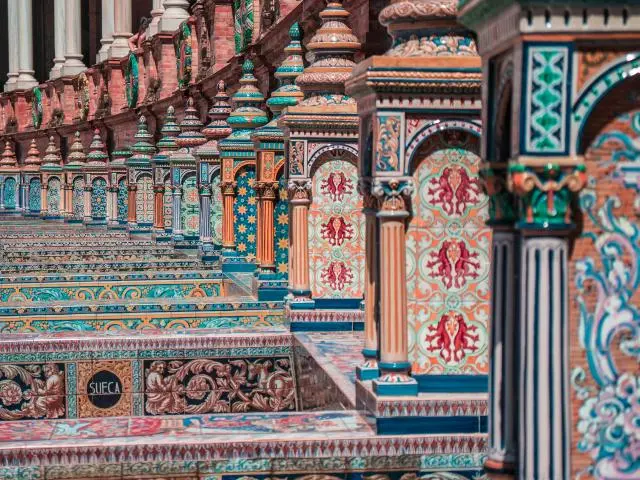
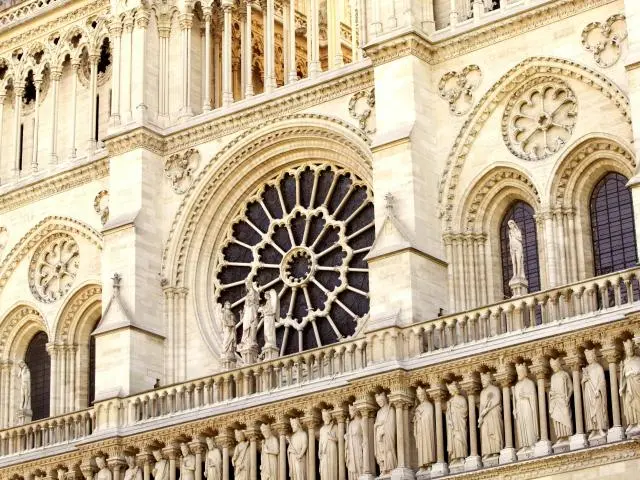

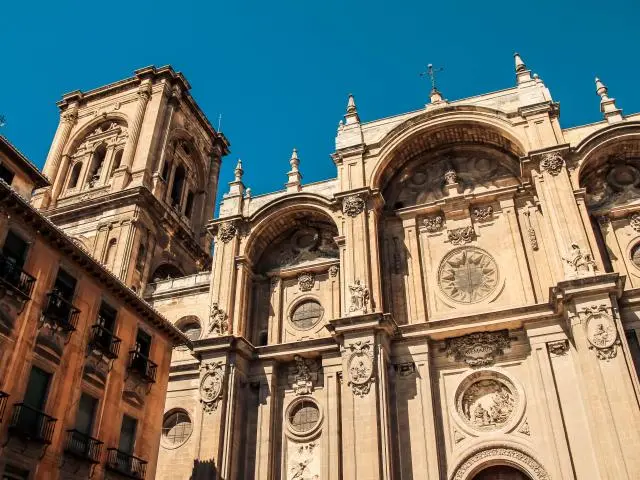
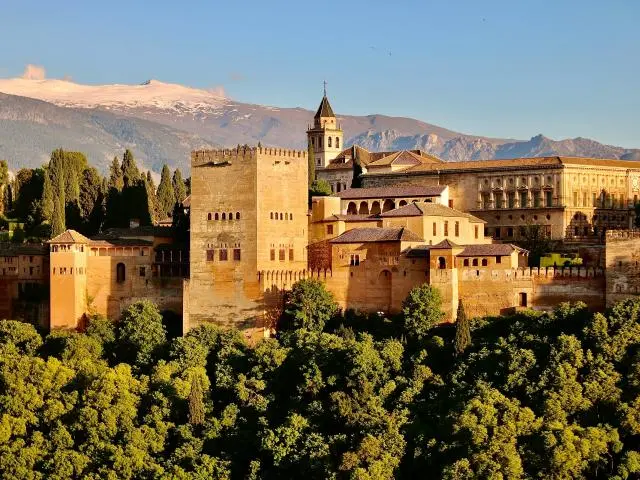
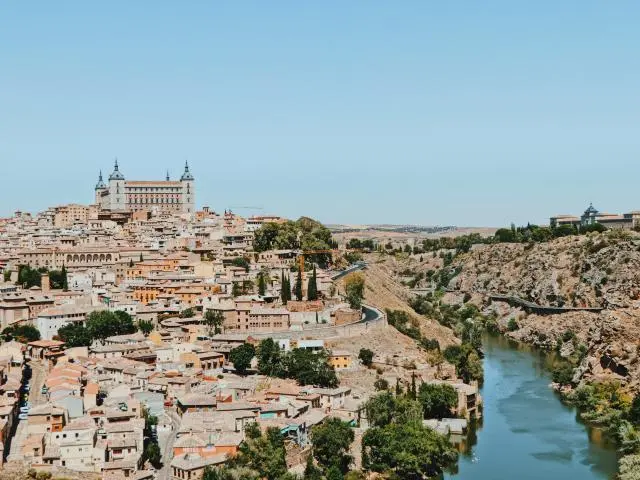
 10-Day Andalusia & Morocco Tour from Madrid...
10-Day Andalusia & Morocco Tour from Madrid...
 13-Day Portugal, Andalusia & Morocco Tour from Madrid...
13-Day Portugal, Andalusia & Morocco Tour from Madrid...
 16-Day Portugal, Andalusia & Morocco Tour from Madrid...
16-Day Portugal, Andalusia & Morocco Tour from Madrid...
 12-Day Andalucia and Morocco Tour from Lisbon...
12-Day Andalucia and Morocco Tour from Lisbon...
 10-Day Andalucia and Morocco Tour from Lisbon...
10-Day Andalucia and Morocco Tour from Lisbon...